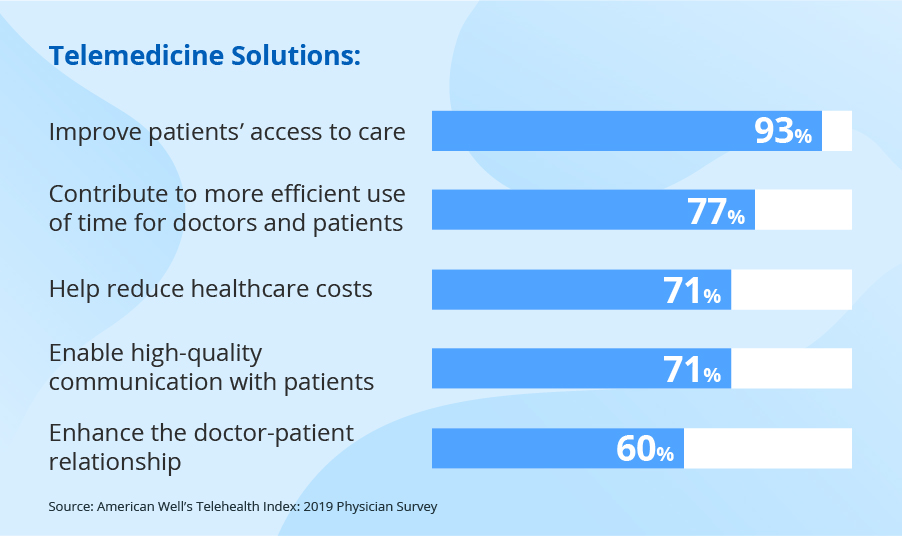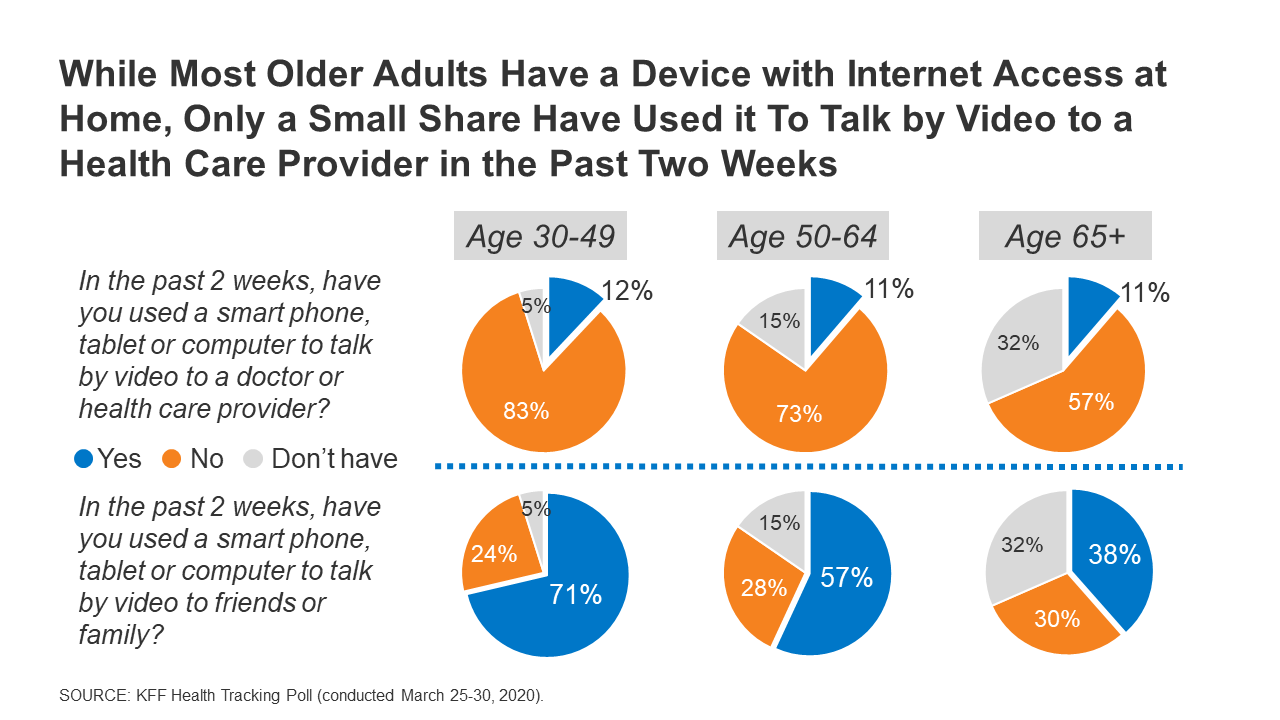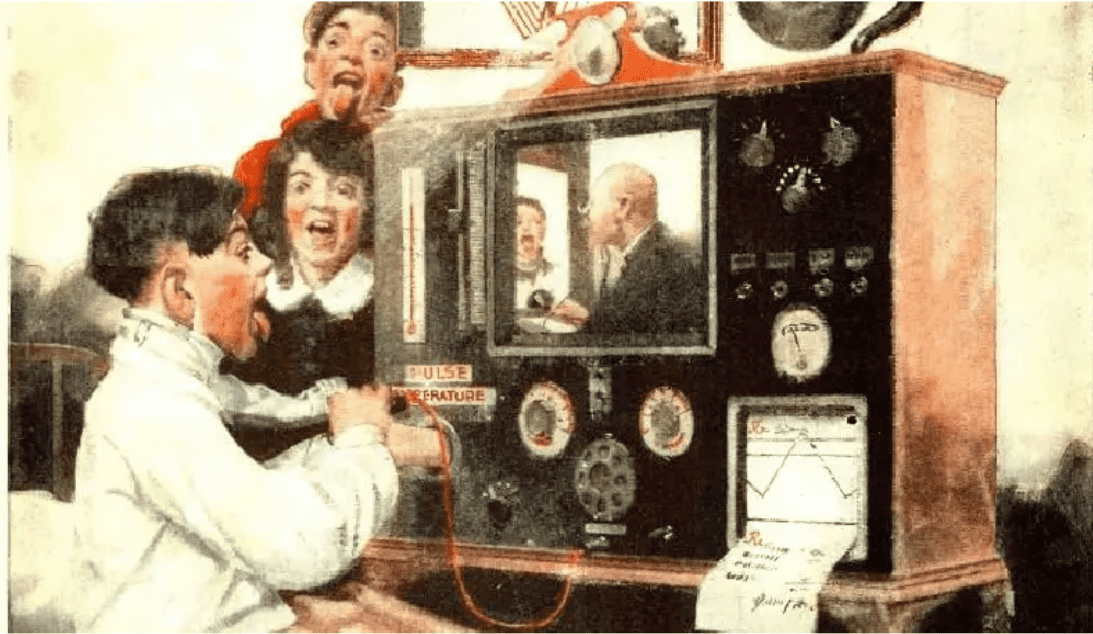The Healthcare industry is evolving using technologies like artificial intelligence, VR/AR, 3D printing, robotics, or nanotechnology. Such technologies help doctors to diagnose the disease or any health issue in a matter of minutes, and therefore doctors can give treatment to their patients on a yearly basis before any further complication occurs.
Besides this, there is another technology that is performing well in the healthcare industry called Telemedicine, giving desirable convenience and comfort to the doctors and patients. This technology has changed the healthcare industry on a large scale.
The question is how?
So, in this article, we will see how telemedicine enters into the market and solve multiple problems of patients and doctors and give a new direction to the healthcare industry? Also, we will look at telemedicine from a pandemic perspective as to how much it impacted the healthcare industry?
How telemedicine enters into the healthcare industry
Telemedicine was first used in the 1950 and early 1950s, where a closed-circuit television link had been set to establish the communication between the Nebraska Psychiatric Institute and Norfolk State Hospital for psychiatric consultations. Also, in 1924, a radio News magazine had mentioned that a patient had used radio in order to consult the doctor, later in 1948 as the technology evolved, there is proof of one doctor sending X-rays Images over the phone to another doctor in Pennsylvania.
These were some examples where the healthcare industry encountered telemedicine for the first time.
2 major points: How does telemedicine become a favorite of patients and providers?
- Convenience and accessibility are the two impressive factors of the telemedicine
The telemedicine concept has emerged for the purpose of providing healthcare facilities to the rural people as they have to travel a long distance even to get primary treatment. Telemedicine is a great help to the small hospitals in rural areas, the reason is that they can provide intensive care with help of specialists in rural areas as well.
Telemedicine is also very popular in the urban area, people prefer using telemedicine solutions rather than going to the clinic as it demands time and some expense. Patients are prioritizing telemedicine if the condition is not that severe because basic health issues can be treated on telemedicine easily. Moreover, on a lighter note, telemedicine also provides features for chronic conditions where patients can share their blood pressure, heart rate, and other medical details in real-time.
HIPPA compliant app called Mhealth( a mobile app) that allows patients to connect with the doctors easily and quickly, plus it’s really helpful for medical professionals as well as they could contact the specialist in an emergency and help.
- Telemedicine is great when it comes to cost-cutting
Telemedicine is a great tool for patients, healthcare providers, and insurers because it reduces the health care cost and saves time as well. In addition to this, telemedicine will help patients when they have minor health issues like sore throat, skin rashes, or cold so that they can avail themselves of the treatment through telemedicine.
Patients have to spend a lot on in-person visits as it includes travel costs and high amount fees for the physical visit. It is worth mentioning here, as some expensive hospitals charge less to patients with chronic conditions if they use remote analysis and monitoring services.
Telemedicine also benefits doctors in many ways, one is that now with telemedicine, they are paid if they attend the call in non-working hours and provide treatment to the patient.
How Telemedicine affecting Healthcare industry: Positive and Negative
- What Hospitals have to say about it

Camron Deemer, president at DrFirst with more than 20 years of healthcare industry experience says “As the healthcare system grapples with COVID-19, however, we’ll see more and more hospitals adopt these technologies to limit exposure at the frontlines, and to protect staff as well as other patients.
Still, most of the hospitals are not capable of acquiring telemedicine because before the pandemic it was considered as a tool mainly for ambulatory or post-acute care. But, since telemedicine started getting popular among patients and health providers, hospitals are now diverting patients who don’t require intensive care and admitting patients with acute conditions.
Also for medical staff, telemedicine reduces the chance of getting infected and ensures safety. Besides this, doctors can now expand their reach in the quarantine period and diagnose patients remotely using telemedicine.
- Telemedicine and hospital burden
John Mathew, a physician of St. Vincent hospital Melbourne said “ We receive relatively fewer cases since patients prefer using telemedicine after the pandemic”
“Patients were not thinking twice to consult a doctor if any medical problems occur before a pandemic, the situation is still the same but the medium is different,” said Shashank Chaturvedi, a Pulmonologist at AIIMS. However, in some of the hospitals, doctors are required to attend to the telemedicine patients as well as the hospital patients.
“ Sometimes it’s become very hectic but when patients get the required treatment in a fair time, it’s all worth it,” said the Verghese Desouza, St, Vincent hospital.
Not every hospital has such infrastructure and medical staff to deploy telemedicine but the one that has the capacity is implementing the remote service in order to enhance the healthcare services.
- A few limitations of telemedicine regards to Covid-19

Telemedicine is a helpful tool for the covid-19 however a small disconnect should be resolved, said John Nosta, president of NostaLab.
When there was widespread testing for covid-19, the hospital management has to deal with the biggest challenge in order to maintain the caseload and patients, here telemedicine limits as its not useful for testing. Though it’s a good option to find out the nearby covid testing centers.
Regarding covid-19, data shows that Telemedicine will not be very useful in the clinical course as it involves clinics, judicial internships, and supervised fieldwork programs, says Nosta, a medical officer. She further added that telemedicine cannot be consistent with conventional telemedicine if the patient is in a serious condition.
The recent technology in telemedicine should be modified to help manage early testing, diagnosis, and triage for those who require in-patient care.
Examples of Telemedicine, remote patient monitoring, and what has been the impact on patients
According to the study of Journal of the American Medical Informatics Association, “during the pandemic, telehealth services for urgent care have grown by 683% and by 4,345% for non-urgent care”.
In the Boston-based Israel medical center, half of the consultations were made on a video call; the center receives 4,200 virtual visits each weekday. As a result, with the emergence of the pandemic, the center anticipates continuing at the current 20% pace for all the ambulatory care visits as well.
Apart from telemedicine, remote monitoring also comes into action in which a health technology company has provided an IOT device to the patient that monitored the symptoms of covid-19 during the pandemic. The device also collects the data that helps caregivers in identifying which patient has the vital sign of the covid-19 and needs to be admitted.
According to a paper published on E Clinical medicine, 1400 patients who had the same medical conditions had managed themselves at home and got cured by acquiring the remote monitoring service.














